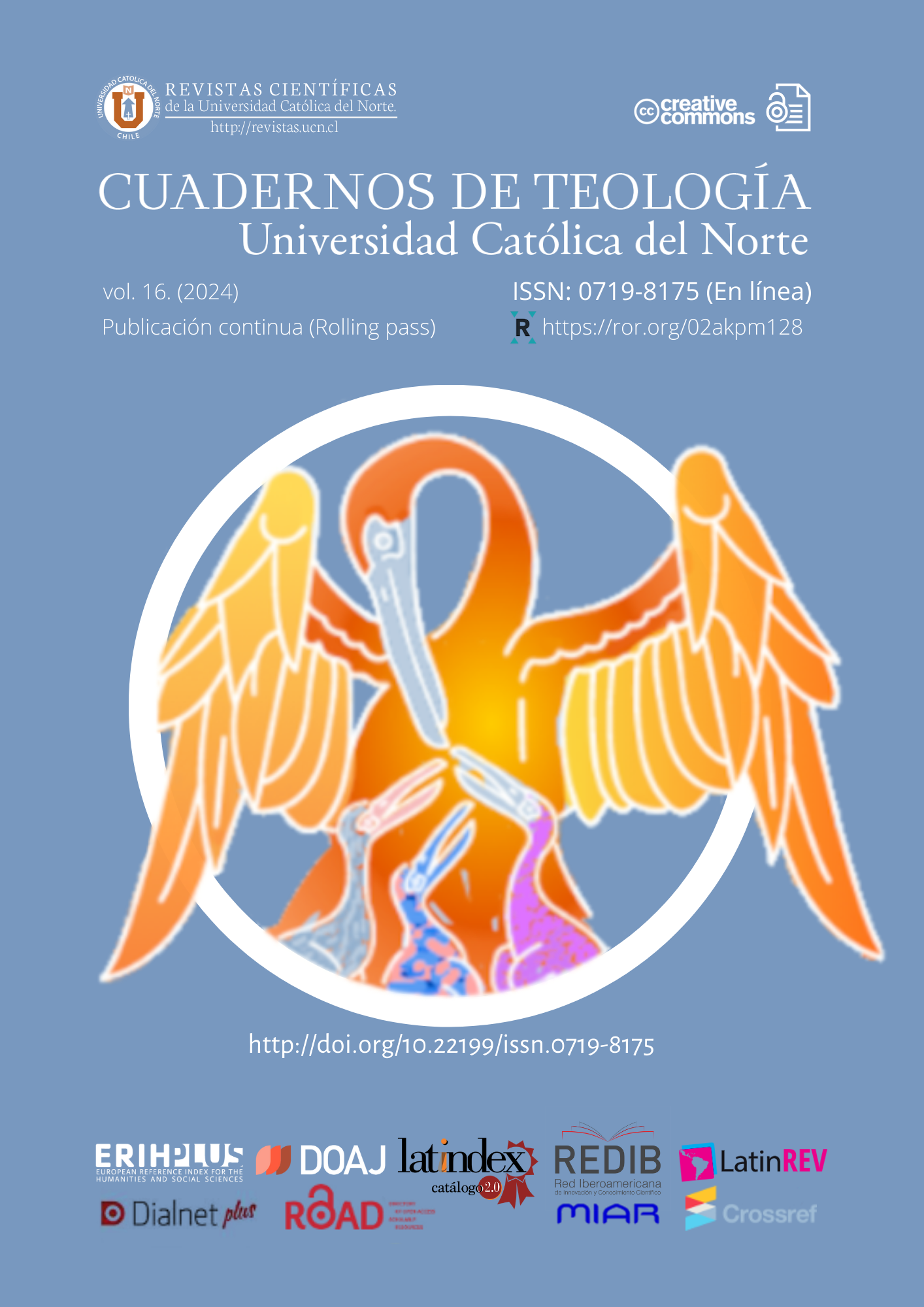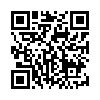Religiosidad y salud mental
tres niveles de análisis
DOI:
https://doi.org/10.22199/issn.0719-8175-6167Palabras clave:
creer, pertenecer, oración, asistencia religiosa, imágenes de DiosResumen
Se presentan algunos modelos conceptuales que explican los efectos que tienen las diversas expresiones de la religiosidad humana en la salud mental. Con este fin, se presentan tres dimensiones en que la religiosidad de los individuos se expresa cotidianamente. En segundo lugar, se exploran las limitaciones de este sub-campo de estudio poniendo de relieve el “lado oscuro" de la relación entre religión y salud mental. El texto concluye con los desafíos contemporáneos de esta literatura y, sobre todo, su recepción en América Latina.
Citas
Ainsworth, M. D. S., Blehar, M. C., Waters, E. y Wall, S. N. (2015). Patterns of attachment: A psychological study of the strange situation. Psychology. https://doi.org/10.4324/9780203758045
Applegate, B. K., Cullen, F. T., Fisher, B. S. y Ven, T. V. (2000). Forgiveness and fundamentalism: Reconsidering the relationship between correctional attitudes and religion. Criminology, 38(3), 719-754. https://doi.org/10.1111/j.1745-9125.2000.tb00904.x
Bader, C. y Froese, P. (2005). Images of God: The effect of personal theologies on moral attitudes, political affiliation, and religious behavior. Interdisciplinary Journal of Research in Religion, 1:11, https://bit.ly/47yNMo1
Barkan, S. E. y Greenwood, S. F. (2003). Religious attendance and subjective well-being among older Americans: Evidence from the General Social Survey. Review of Religious Research, 45(2),116-129. https://doi.org/10.2307/3512578
Bellah, R. N. (2011). Religion in human evolution: From the Paleolithic to the Axial Age. Harvard University. https://doi.org/10.4159/harvard.9780674063099
Berger, P. L. (1971). El dosel sagrado. Para una teoría sociológica de la religion (N. Míguez, Trad.). Amorrortu.
Berger, P. L. (2011). The sacred canopy: Elements of a sociological theory of religion. Open Road Media.
Berger, P. L. y Luckmann, T. (2016). The social construction of reality (2a ed.). En W. Longhofer y D. Winchester (Eds.), Social Theory Re-Wired (pp. 110-122). Routledge. https://doi.org/10.4324/9781315775357
Bock, E. W., Beeghley, L. y Mixon, A. J. (1983). Religion, socioeconomic status, and sexual morality: An application of reference group theory. The Sociological Quarterly, 24(4), 545-559. https://doi.org/10.1111/j.1533-8525.1983.tb00718.x
Bonhag, R. y Upenieks, L. (2021). Mattering to god and to the congregation: Gendered effects in mattering as a mechanism between religiosity and mental health. Journal for the Scientific Study of Religion, 60(4), 890-913. https://doi.org/10.1111/jssr.12753
Bradley, E. (1995). Religious involvement and social resources: Evidence from the data set" Americans' changing lives". Journal for the Scientific Study of Religion, 34(2), 259-267. https://doi.org/10.2307/1386771
Bradshaw, M., Ellison, C. G. y Flannelly, K. J. (2008). Prayer, God imagery, and symptoms of psychopathology. Journal for the Scientific Study of Religion, 47(4), 644-659. https://doi.org/10.1111/j.1468-5906.2008.00432.x
Brown, C. (2013). The healing gods: Complementary and alternative medicine in Christian America. Oxford University. https://doi.org/mbd4
Champion, F. (2004). Logique des bricolages: Retours sur la nébuleuse mystique-ésotérique et au-delà. Recherches Sociologiques, 35(1), 59-78. https://bit.ly/3H01u8m
Cochran, J. K. y Beeghley, L. (1991). The influence of religion on attitudes toward nonmarital sexuality: A preliminary assessment of reference group theory. Journal for the Scientific Study of Religion, 30(1), 45-62. https://doi.org/10.2307/1387148
Collins, R. (2014). Interaction ritual chains. In Interaction Ritual Chains. Princeton University.
Davie, G. (1990). Believing without belonging: Is this the future of religion in Britain? Social Compass, 37(4), 455-469. https://doi.org/10.1177/003776890037004004
Davie, G. (2017). Sociology of religion. En R. A. Segal (Ed.), The Blackwell Companion to the Study of Religion (pp. 171-191). Wiley. https://doi.org/10.1002/9781405168748.ch8
Durkheim, E. (1995). Sociology. Its Subject, Method, Mission. V: Sociology. Its Subject, Method, Mission. Kanon.
Durkheim, É. (2016). The elementary forms of religious life (2a ed.). En W. Longhofer y D. Winchester (Eds.), Social Theory Re-Wired (pp. 52-67). Routledge. https://doi.org/10.4324/9781315775357
Ellis, A. (1962). Reason and emotion in psychotherapy. Stuart.
Ellison, C. G. (1991). An eye for an eye? A note on the southern subculture of violence thesis. Social Forces, 69(4), 1223–1239. https://doi.org/10.2307/2579310
Ellison, C. G. y Burdette, A. M. (2012). Religion and the sense of control among US adults. Sociology of Religion, 73(1), 1-22. https://doi.org/10.1093/socrel/srr035
Ellison, C. G. y George, L. K. (1994). Religious involvement, social ties, and social support in a southeastern community. Journal for the Scientific Study of Religion, 33(1), 46-61. https://doi.org/10.2307/1386636
Ellison, C. G. y Henderson, A. K. (2011). Religion And Mental Health: Through The Lens Of The Stress Process. En A. Blasi (Ed.), Toward a sociological theory of religion and health (pp. 11-44). Brill. https://doi.org/10.1163/ej.9789004205970.i-277.7
Ellison, C. G., Zhang, W., Krause, N. y Marcum, J. P. (2009). Does negative interaction in the church increase psychological distress? Longitudinal findings from the Presbyterian Panel Survey. Sociology of religion, 70(4), 409-431. https://doi.org/10.1093/socrel/srp062
Ellison, C. G. y Lee, J. (2010). Spiritual struggles and psychological distress: Is there a dark side of religion? Social Indicators Research, 98(3), 501-517.https://doi.org/10.1007/s11205-009-9553-3
Flannelly, K. J., Galek, K., Ellison, C. G. y Koenig, H. G. (2010). Beliefs about God, psychiatric symptoms, and evolutionary psychiatry. Journal of Religion and Health, 49(2), 246-261. https://doi.org/10.1007/s10943-009-9244-z
Freud, S. (1928). The future of an illusion. Hogarth.
Froese, P. y Bader, C. (2008). Unraveling religious worldviews: The relationship between images of God and political ideology in a cross-cultural analysis. The Sociological Quarterly, 49(4), 689–718. https://doi.org/10.1111/j.1533-8525.2008.00132.x
Froese, P. y Bader, C. (2010). America's Four Gods: What We Say about God-And What That Says about Us. Oxford University.
Froese, P. y Jones, R. (2021). The sociology of prayer: Dimensions and mechanisms. Social Sciences, 10(1): 15. https://doi.org/10.3390/socsci10010015
Galek, K., Krause, N., Ellison, C. G., Kudler, T. y Flannelly, K. J. (2007). Religious doubt and mental health across the lifespan. Journal of Adult Development, 14(1), 16-25. https://doi.org/10.1007/s10804-007-9027-2
Gilkes, C. T. (1980). The black church as a therapeutic community: Suggested areas for research into the black religious experience. Journal of the Interdenominational Theological Center, 8(1), 29-44. https://bit.ly/4aHRZrW
Greeley, A. M. (1989). Religious change in America. Harvard University.
Hervieu-Léger, D. (2003). Le pèlerin et le converti: La religion en mouvement. Flammarion.
Hill, T. D., Burdette, A. M., Ellison, C. G. y Musick, M. A. (2006). Religious attendance and the health behaviors of Texas adults. Preventive Medicine, 42(4), 309-312. https://doi.org/10.1016/j.ypmed.2005.12.005
Hill, T. D., Burdette, A. M. y Idler, E. L. (2011). Religious involvement, health status, and mortality risk. En R. A. Settersten y J. L. Angel (Eds.), Handbook of sociology of aging (pp. 533-546). Springer. https://doi.org/10.1007/978-1-4419-7374-0_33
Hinze, W. M., Mencken, F. C. y Tolbert, C. M. (2011). From Obama to Osama: Image of god and trust in Muslims among the highly religious in the United States. Sociological Focus, 44(1), 18-36. https://doi.org/10.1080/00380237.2011.10571386
Homan, P. y Burdette, A. (2021). When religion hurts: Structural sexism and health in religious congregations. American Sociological Review, 86(2), 234-255. https://doi.org/10.1177/0003122421996686
Hunsberger, B., McKenzie, B., Pratt, M. y Pancer, S. M. (1993). Religious doubt: A social psychological analysis. Research in the Social Scientific Study of Religion, 5(1), 27-51.
Iannaccone, L. R. (1994). Why strict churches are strong. American Journal of Sociology, 99(5), 1180-1211. https://doi.org/10.1086/230409
Jackson, L. E. y Coursey, R. D. (1988). The relationship of God control and internal locus of control to intrinsic religious motivation, coping and purpose in life. Journal for the Scientific Study of Religion, 27(3), 399-410. https://doi.org/10.2307/1387378
Janssen, J., De Hart, J. y Den Draak, C. (1990). A content analysis of the praying practices of Dutch youth. Journal for the Scientific Study of Religion, 29(1), 99–107. https://doi.org/10.2307/1387033
Johnson, K. A., Okun, M. A. y Cohen, A. B. (2015). The mind of the Lord: Measuring authoritarian and benevolent God representations. Psychology of Religion and Spirituality, 7(3), 227-238. https://doi.org/10.1037/rel0000011
Koenig, H. G., King, D. E. y Carson, V. B. (2012). Handbook of religion and health. Oxford University.
Krause, N. (2003). Religious meaning and subjective well-being in late life. The Journals of Gerontology Series B: Psychological Sciences and Social Sciences, 58(3), S160-S170. https://doi.org/10.1093/geronb/58.3.S160
Krause, N. (2006). Church-based social support and change in health over time. Review of Religious Research, 48(2),125-140. https://bit.ly/3RL4P07
Krause, N. (2014). Exploring the relationships among humility, negative interaction in the church, and depressed affect. Aging & Mental Health, 18(8), 970–979. https://doi.org/10.1080/13607863.2014.896867
Krause, N., Ingersoll-Dayton, B., Ellison, C. G. y Wulff, K. M. (1999). Aging, religious doubt, and psychological well-being. The Gerontologist, 39(5), 525–533. https://doi.org/10.1093/geront/39.5.525
Krause, N. y Wulff, K. M. (2004). Religious doubt and health: Exploring the potential dark side of religion. Sociology of Religion, 65(1), 35-56. https://doi.org/10.2307/3712506
Lehmann, C. (2002). ¿Cuán religiosos somos los chilenos? Mapa de la religiosidad en 31 países. Estudios Públicos, 85, 21-44. https://bit.ly/3TKOGui
Levin, J. S. y Taylor, R. J. (1997). Age differences in patterns and correlates of the frequency of prayer. The Gerontologist, 37(1), 75-88. https://doi.org/dvg642
Lim, C. y Putnam, R. D. (2010). Religion, social networks, and life satisfaction. American Sociological Review, 75(6), 914-933. https://doi.org/10.1177/0003122410386686
Liu, Y. y Froese, P. (2020). Faith and agency: The relationships between sense of control, socioeconomic status, and beliefs about god. Journal for the Scientific Study of Religion, 59(2), 311-326. https://doi.org/10.1111/jssr.12655
Luckmann, T., Kaden, T. y Schnettler, B. (2022). The invisible religion: The problem of religion in modern society. Routledge. https://doi.org/10.4324/9781003257875
Luhrmann, T. M. (2012). When God talks back: Understanding the American evangelical relationship with God. Vintage. https://doi.org/10.24260/alalbab.v1i1.16
Mannheimer, A. H. y Hill, T. D. (2015). Deviating from religious norms and the mental health of conservative Protestants. Journal of Religion and Health, 54(5), 1826-1838. https://doi.org/10.1007/s10943-014-9951-y
Marx, K. (2010). Crítica de la Filosofía del Estado de Hegel (J. M. Ripalda, Trad.). Biblioteca Nueva.
Masters, K. S. y Spielmans, G. I. (2007). Prayer and health: Review, meta-analysis, and research agenda. Journal of Behavioral Medicine, 30(4), 329-338. https://doi.org/10.1007/s10865-007-9106-7
McRae, M. B., Carey, P. M. y Anderson-Scott, R. (1998). Black churches as therapeutic systems: A group process perspective. Health Education & Behavior, 25(6), 778-789. https://doi.org/10.1177/109019819802500607
Mencken, F. C. y Froese, P. (2019). Gun culture in action. Social Problems, 66(1), 3-27. https://doi.org/10.1093/socpro/spx040
Morello, G. S. (2021). Lived religion in Latin America: An enchanted modernity. Oxford University. https://doi.org/10.1093/oso/9780197579626.001.0001
Murphy, B. y Bates, G. W. (1997). Adult attachment style and vulnerability to depression. Personality and Individual Differences, 22(6), 835-844. https://doi.org/fj4dfg
Newberg, A. y Waldman, M. R. (2009). How God changes your brain: Breakthrough findings from a leading neuroscientist. Ballantine.
Nguyen, T. T. y Zuckerman, M. (2016). The links of God images to women's religiosity and coping with depression: A socialization explanation of gender difference in religiosity. Psychology of Religion and Spirituality, 8(4), 309. https://doi.org/10.1037/rel0000060
Nueva Versión Internacional. (1979). https://www.bibliavida.com/nvi/
Ozorak, E. W. (1996). The power, but not the glory: How women empower themselves through religion. Journal for the Scientific Study of Religion, 35(1), 17–29. https://doi.org/10.2307/1386392
Pargament, K. I., Koenig, H. G. y Perez, L. M. (2000). The many methods of religious coping: Development and initial validation of the RCOPE. Journal of Clinical Psychology, 56(4), 519-543. https://doi.org/fg4hjm
Peacock, J. R. y Poloma, M. M. (1999). Religiosity and life satisfaction across the life course. Social Indicators Research, 48(3), 319-343. https://doi.org/bxc9nb
Putnam, R. D. y Campbell, D. E. (2012). American grace: How religion divides and unites us. Simon and Schuster.
Reichman, N. E., Hamilton, E. R., Hummer, R. A. y Padilla, Y. C. (2008). Racial and ethnic disparities in low birthweight among urban unmarried mothers. Maternal and Child Health Journal, 12(2), 204-215. https://doi.org/10.1007/s10995-007-0240-1
Rowatt, W. C., LaBouff, J., Johnson, M., Froese, P. y Tsang, J.-A. (2009). Associations among religiousness, social attitudes, and prejudice in a national random sample of American adults. Psychology of Religion and Spirituality, 1(1), 14-24. https://doi.org/10.1037/a0014989
Saroglou, V. (2011). Believing, bonding, behaving, and belonging: The big four religious dimensions and cultural variation. Journal of Cross-Cultural Psychology, 42(8), 1320-1340. https://doi.org/10.1177/0022022111412267
Schieman, S., Bierman, A. y Ellison, C. G. (2013). Religion and mental health. En C. S. Aneshensel, J. C. Phelan yA, Bierman (Eds.), Handbook of the sociology of mental health (pp. 457-478). Springer. https://doi.org/10.1007/978-94-007-4276-5_22
Schieman, S., Pudrovska, T., Pearlin, L. I. y Ellison, C. G. (2006). The sense of divine control and psychological distress: Variations across race and socioeconomic status. Journal for the Scientific Study of Religion, 45(4), 529-549. https://doi.org/10.1111/j.1468-5906.2006.00326.x
Schluchter, W. (2018). El desencantamiento del mundo: Seis estudios sobre Max Weber. Fondo de Cultura Económica.
Sherkat, D. E. y Ellison, C. G. (2007). Structuring the religion‐environment connection: Identifying religious influences on environmental concern and activism. Journal for the Scientific Study of Religion, 46(1), 71-85. https://doi.org/bm85z5
Snowden, J. H. (1916). The place of doubt in religious belief. The Biblical World, 47(3), 151–155. https://doi.org/10.1086/475470
Stark, R. (2003). One true God: Historical consequences of monotheism. Princeton University.
Stark, R. y Finke, R. (2000). Acts of faith: Explaining the human side of religion. University of California.
Stolz, J. (2010). A silent battle: Theorizing the effects of competition between churches and secular institutions. Review of Religious Research, 51(3), 253-276. https://bit.ly/3H4dTZ8
Stover, R. G. y Hope, C. A. (1984). Monotheism and gender status: A cross-societal study. Social Forces, 63(2), 335-348. https://doi.org/10.2307/2579049
Tabak, M. A. y Mickelson, K. D. (2009). Religious service attendance and distress: The moderating role of stressful life events and race/ethnicity. Sociology of Religion, 70(1), 49-64. https://doi.org/10.1093/socrel/srp001
Thomson, R. A. (2017). Religion and Differential Justice [Tesis de doctorado, Baylor University]. https://bit.ly/3NQD9Wx
Thomson, R. A. y Froese, P. (2016). God versus party: Competing effects on attitudes concerning criminal punishment, national security, and military service. Journal for the Scientific Study of Religion, 55(4), 839–858. https://doi.org/10.1111/jssr.12293
Tomás de Aquino. (2003). Suma Teológica (Vol. 5). Loyola.
Uecker, J. E., Ellison, C. G., Flannelly, K. J. y Burdette, A. M. (2016). Belief in human sinfulness, belief in experiencing divine forgiveness, and psychiatric symptoms. Review of Religious Research, 58(1), 1-26. https://doi.org/kzr3
Unnever, J. D., Bartkowski, J. P. y Cullen, F. T. (2010). God imagery and opposition to abortion and capital punishment: A partial test of religious support for the consistent life ethic. Sociology of Religion, 71(3), 307-322. https://doi.org/10.1093/socrel/srq046
Upenieks, L., Ford-Robertson, J. y Robertson, J. E. (2022). Trust in God and/or Science? Sociodemographic Differences in the Effects of Beliefs in an Engaged God and Mistrust of the COVID-19 Vaccine. Journal of Religion and Health, 61(1), 657-686. https://doi.org/10.1007/s10943-021-01466-5
Ventis, W. L. (1995). The relationships between religion and mental health. Journal of Social Issues, 51(2), 33-48. https://doi.org/10.1111/j.1540-4560.1995.tb01322.x
Weber, M. (1993). The sociology of religion. Beacon.
Whitehead, A. L. (2012). Gender ideology and religion: Does a masculine image of God matter? Review of Religious Research, 54(2), 139-156. https://doi.org/gmbn79
Whittington, B. L. y Scher, S. J. (2010). Prayer and subjective well-being: An examination of six different types of prayer. International Journal for the Psychology of Religion, 20(1), 59–68. https://doi.org/10.1080/10508610903146316
Willaime, J.-P. (1985). La religion civile à la française. Autres Temps, 6(1), 10–32. https://doi.org/10.3406/chris.1985.1011
Willaime, J.-P. (2003). La religion: Un lien social articulé au don. Revue du MAUSS, 22(2), 248-269. https://doi.org/10.3917/rdm.022.0248
Woolley, F. R., Schuman, K. L. y Lyon, J. L. (1982). Neonatal mortality in Utah. American Journal of Epidemiology, 116(3), 541-546. https://doi.org/mbd3
Yang, F. (2011). Religion in China: Survival and revival under communist rule. Oxford University. https://doi.org/10.1093/acprof:oso/9780199735655.001.0001
Publicado
Cómo citar
Número
Sección
Derechos de autor 2024 Ignacio Cid-Pozo

Esta obra está bajo una licencia internacional Creative Commons Atribución 4.0.
Los autores continúan como propietarios de sus trabajos, y pueden volver a publicar sus artículos en otro medio sin tener que solicitar autorización, siempre y cuando indiquen que el trabajo fue publicado originariamente en Revista Cuadernos de Teología (eISSN:0719-8175).











_(1).png)







